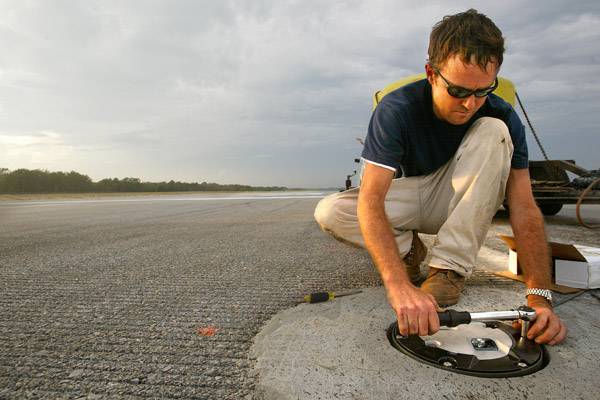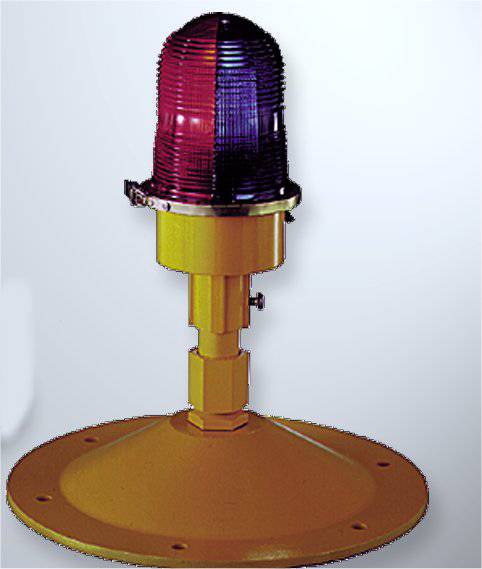Runway landing lights question
if you were landing in rl what about the landing lights? i mean are they in the ground? do they ever break? can anyone answere these questions i have no other way of explaining this 
 10 Answers
10 Answers
huh?
acepilot32 wrote:
if you were landing in rl what about the landing lights? i mean are they in the ground? do they ever break? can anyone answere these questions i have no other way of explaining this
What is rl? 😕
Now that Iam sober lemme take a crack at this...
btw vegas rl=real life.
I think Ace means if while landing, do aircraft ever break the actual landing lights on the runway.
I wanna say they are actually built into the runway and I would hope that the lens cover is tough enough to withstand a several ton aircraft smacking down on it... but I am sure some break from time to time.
But let's not speculate, let's ask Wikipedia!!
----------------------------------------------------
History
The first runway lighting appeared in 1930 at Cleveland Municipal Airport (now known as Cleveland Hopkins International Airport) in Cleveland, Ohio.
Technical specifications
Runway lighting is used at airports which allow night landings. Seen from the air, runway lights form an outline of the runway. A particular runway may have some or all of the following.

* Runway End Identification Lights (REIL) Unidirectional (facing approach direction) or omnidirectional pair of synchronized flashing lights installed at the runway threshold, one on each side.
* Runway end lights A pair of four lights on each side of the runway On precision instrument runways, these lights extend along the full width of the runway. These lights show green when viewed by approaching aircraft and red when seen from the runway.
* Runway Edge Lights White elevated run the length of the runway on either side. On precision instrument runways, the edge-lighting becomes yellow in the last 2,000 ft (610 m) of the runway. Taxiways are differentiated by being bordered by blue lights, or by having green centre lights, depending on the width of the taxiway, and the complexity of the taxi pattern.
* Runway Centerline Lighting System (RCLS) Lights embedded into surface of the runway at 50 ft (15 m) intervals along the runway centerline on some precision instrument runways. White except last 3,000 ft (914 m), alternate white and red for next 2,000 ft (610 m) and red for last 1,000 ft (305 m).

* Touchdown Zone Lights (TDZL) This consists of rows of white light bars (with three in each row) on either side of the centerline over the first 3,000 ft (914 m) (or to the midpoint, whichever is less) of the runway.
* Taxiway Centerline Lead-Off Lights Installed along lead-off markings, alternate green and yellow lights embedded into runway pavement. It starts with green light about runway centerline to the position of first centerline light beyond holding position on taxiway.
* Taxiway Centerline Lead-On Lights Installed same way as Taxiway centerline Lead-Off Lights.
* Land and Hold Short Lights A row of white pulsating lights installed across the runway to indicate hold short position on some runways which are facilitating LAHSO operations.
* Approach Lighting System or ALS, is a lighting system installed on the approach end of an airport runway and consists of a series of lightbars, strobe lights, or a combination of the two that extends outward from the runway end.
According to Transport Canada's regulations, the runway-edge lighting must be visible for at least 2 miles (3 kilometres). Additionally, a new system of advisory lighting, Runway Status Lights, is currently being tested in the United States.

The edge lights must be arranged such that:
* the minimum distance between lines is 75 ft (23 m), and maximum is 200 ft (61 m);
* the maximum distance between lights within each line is 200 ft (61 m);
* the minimum length of parallel lines is 1,400 ft (427 m);
* the minimum number of lights in the line is 8.[1]
Control of Lighting System Typically the lights are controlled by a control tower, a Flight Service Station or another designated authority. Some airports/airfields (particularly uncontrolled ones) are equipped with Pilot Controlled Lighting, so that pilots can temporarily turn on the lights when the relevant authority is not available. This avoids the need for automatic systems or staff to turn the lights on at night or in other low visibility situations. This also avoids the cost of having the lighting system on for extended periods. Smaller airports may not have lighted runways or runway markings. Particularly at private airfields for light planes, there may be nothing more than a windsock beside a landing strip.
I guess that answers the question Ace. 😉
thanks alot Bel
Nice piece of research and presentation Bel - henceforward you shall be addressed as Emeritus 😀
Now that's how to answer a question 😀 !
Yer i always wondered that aswell, but just never asked
That was like a history lession for me 😂
"Well you learn something new everyday don't you" 😀
Glad I could help... I was curious also actually... haha
👏 Nice job belgeode.
Still does not answer your question? Ask a new question!
If the question and answers provided above do not answer your specific question - why not ask a new question of your own? Our community and flight simulator experts will provided a dedicated and unique answer to your flight sim question. And, you don't even need to register to post your question!
Search our questions and answers...
Be sure to search for your question from existing posted questions before asking a new question as your question may already exist from another user. If you're sure your question is unique and hasn't been asked before, consider asking a new question.
Related Questions
Flight Sim Questions that are closely related to this...


 Jump to latest
Jump to latest

